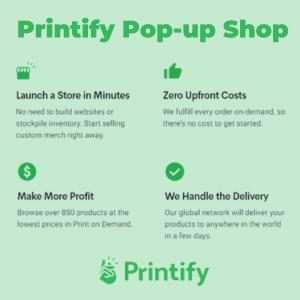How Small Business Owners Can Grow Using The Lean Startup Method
Running a small business is tough. You face many of the same challenges as bigger companies but with fewer resources. Eric Ries’ book “The Lean Startup” offers practical solutions for businesses of all sizes. Here’s how you can use the ideas of the Lean Startup Method to grow your small business without wasting time and money.
Running a small business means facing big challenges with limited resources. The Lean Startup method offers practical ways to test ideas, focus on what works, and grow without wasting time or money.
This article breaks down the key strategies that can help you build a stronger business by focusing on what customers truly value.
- Find Out What Customers Really Want
- Create a Quick, Simple Version First (MVP)
- Measure What Matters
- Be Ready to Change Direction (Pivot)
- Talk to Real Users Regularly
- Cut Out Wasted Work
- Innovation Accounting: A New Way to Measure Progress
Find Out What Customers Really Want
Many business owners create products based on what they think customers want. This often leads to wasted effort. Instead, talk directly to customers and test your ideas before fully developing them.
How to do this:
- Survey potential customers about their problems
- Show simple versions of your product to get feedback
- Watch how people actually use your product or service
Real-world example: A small bakery owner thought customers wanted more fancy cake options. Before adding ten new flavors, she put out small samples of three test flavors with feedback cards. She discovered customers actually wanted healthier options with less sugar, not more flavors. This saved her from investing in ingredients and recipes that wouldn’t sell well.
Implementation tip: Create a simple Google Form to send to your email list asking about their biggest problems related to your products. Look for patterns in the responses to guide your next steps.
Create a Quick, Simple Version First (MVP)
Don’t spend months perfecting your product before showing it to customers. Make something basic that works and get it out there fast.
Example: If you’re opening a food truck, you might start by selling just three menu items at local events before investing in a full truck and menu.
How to create an effective MVP:
- Focus only on core features that solve the main customer problem
- Use existing tools and platforms instead of building from scratch
- Set a strict deadline (2-4 weeks) to launch your first version
- Be clear with customers that you’re testing and value their input
Real-world example: A woman starting a houseplant care business didn’t wait until she had a storefront. She began by offering three basic care packages through Facebook Marketplace. This let her test pricing, refine her services, and build a customer base before investing in a physical location.
Measure What Matters
Track information that helps you make decisions, not just numbers that look good.
Important metrics to track:
- Customer acquisition cost (how much you spend to get each new customer)
- Retention rate (how many customers come back)
- Average revenue per customer
- Time spent on different business activities
- Customer satisfaction scores
Actionable vs. Vanity Metrics:
- Vanity metric: Total website visitors
- Actionable metric: Conversion rate of visitors to paying customers
Implementation tip: Choose just 3-5 key metrics that directly connect to your business goals. Review them weekly and make decisions based on trends, not daily fluctuations.
Be Ready to Change Direction (Pivot)
Sometimes your first idea won’t work. The data might show that customers want something different than what you’re offering.
When to consider changing course:
- Customer interest is low despite your marketing efforts
- People try your product but don’t come back
- A different feature or service gets more attention than your main offering
Types of pivots to consider:
- Zoom-in pivot: Make one feature of your product the whole product
- Customer segment pivot: Keep the same product but sell to different customers
- Value capture pivot: Change how you make money (subscription vs. one-time purchase)
- Channel pivot: Sell through different distribution channels
- Platform pivot: Turn a single product into a platform others can build upon
Real-world example: A solopreneur started selling handmade dog toys online with limited success. After noticing many questions about pet care, she pivoted to offering pet care workshops online. This new direction became much more profitable while requiring less production time.
Talk to Real Users Regularly
Make customer feedback part of your weekly routine. This keeps you from spending time on things customers don’t care about.
Simple ways to get feedback:
- Follow up with emails after purchases
- Offer small discounts for completing surveys
- Watch customers use your product in person
- Host monthly customer calls with 3-5 customers
- Read and respond to all customer service issues yourself
Questions to ask customers:
- “What was your biggest challenge before using our product?”
- “What’s the main benefit you get from our product?”
- “What’s one thing we could improve?”
- “Would you recommend us to a friend? Why or why not?”
Implementation tip: Block 2 hours every Friday to review customer feedback and identify patterns. Make this a non-negotiable part of your schedule.
Cut Out Wasted Work
Focus your limited time and money only on what creates value for customers.
To reduce waste:
- Stop offering products or services that few people buy
- Simplify complex processes that slow down your business
- Drop features customers don’t use
- Automate repetitive tasks
- Batch similar activities (like email, social media posts)
- Say no to projects that don’t directly help your main goals
The 80/20 rule in action: Identify which 20% of your efforts produce 80% of your results. A restaurant owner realized 80% of profits came from weekend dinner service and catering. By focusing on these areas and reducing weekday lunch hours, she increased profits while working fewer hours.
Innovation Accounting: A New Way to Measure Progress
Traditional accounting doesn’t work well for testing new ideas. Innovation accounting helps you measure progress when you’re facing uncertainty.
How to implement innovation accounting:
- Establish your baseline metrics with your current version
- Test your biggest assumption with a small experiment
- Measure the results against your baseline
- Decide if the change shows enough improvement to keep
- Document what you learned and start a new experiment
Example: A small clothing retailer believed offering free shipping would increase sales enough to cover the extra costs. Instead of fully implementing this policy, they ran a two-week test. They measured:
- Change in conversion rate
- Change in average order value
- Total shipping costs incurred
- Overall impact on profit
The data showed that while free shipping increased sales by 15%, the average order value dropped, resulting in a net loss. Instead of continuing this strategy, they pivoted to “free shipping on orders over $75” which successfully increased both sales and average order value.
Try This Today: Your 30-Day Startup Plan for The Lean Startup Method
Week 1: Identify Assumptions
- List your three biggest assumptions about what your customers want
- Rank them by importance to your business model
- Design simple experiments to test each one
Week 2: Build a Minimum Viable Product
- Create the simplest version that tests your biggest assumption
- Set clear success metrics before launching
- Get it to customers as quickly as possible
Week 3: Measure Results
- Collect data from your MVP
- Focus on learning rather than perfection
- Document everything you discover
Week 4: Learn and Decide
- Analyze your results
- Decide whether to pivot or persevere
- Plan your next experiment based on what you learned
The lean startup method works well for small businesses because it helps you grow carefully without big risks. By testing ideas quickly and focusing on what customers truly value, you can build a stronger business that meets real needs—all without wasting your limited time and money.
Running a small business? Don’t waste time or money guessing. Use The Lean Startup Method to test, measure, and grow smarter. Share on X
Note: Some links on this page are affiliate links meaning that if you click on my link and make a purchase, I will receive a small commission. It does not however affect the price you pay. Plus, it’s a great way to support me and the content I’m providing.







